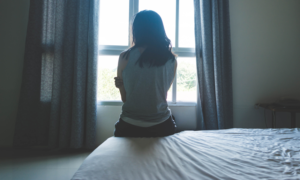 We have come to realize that sexual victimization is universal and not gender-specific, affecting both girls and boys.
We have come to realize that sexual victimization is universal and not gender-specific, affecting both girls and boys.
Providers who represent law enforcement, social services, medical, courts, probation, youth shelter workers, outreach workers and many others from a multidisciplinary perspective need to be aware of boys and victimization. They need to support the development of intervention systems that work with male victims as victims and not solely as perpetrators.
In one study, youth 18 to 23 years old reported trading sex for daily needs such as food, shelter, clothing and drugs in addition to money for support for younger siblings or children. A majority in the study, commissioned by Covenant House New York, reported multiple risk factors in their developing years, such as lack of adult guidance, lack of a caring adult, issues related to neglect and lack of opportunities for education and employment. It is important to note that 78 percent of respondents reported a history of sexual abuse and/or other extreme traumas.
The various systems that work with male youth both publicly and privately need to be aware of the factors that lead to sexual exploitation and the behavioral indicators that can identify males at risk for or actively exploited in our culture.
Adverse childhood experiences that include sexual abuse, homes with domestic violence, family history of substance abuse, gang-related activities in neighborhoods, homelessness/runaway behavior, war-torn communities, poverty and multiple foster placements, to name a few, contribute to multivictimization experiences as they develop.
Such youth display depression, anxiety, oppositional behavior disorder, self-mutilation, suicidal episodes, truancy and behaviors that lead to a relationship with the criminal justice system.
As many male youth are thrown out of their house for being gay/bisexual or transgender, they are placed at high risk for sexual exploitation in attempts to meet their basic needs. A 2001 study says data in the field thus far over-represents GBTQ youth. Their research suggests the majority are heterosexual.
It is important to note that the commercial sexual exploitation (CSE) of boys is not a gender or sexual orientation issue. It’s about power and control. Each and every at-risk male youth needs to be equally and appropriately identified and supported through the various systems charged with protecting them.
According to a report “And Boys Too,” by ECPAT-USA, an anti-trafficking policy organization, there are contributing factors to why CSE boys and young men are not identified or served:
- The unwillingness of boys to identify as sexually exploited due to shame and stigma about their sexual orientation or perception of sexual orientation by family/community
- Lack of appropriate screening and intake by law enforcement and social service organizations based on the belief that boys are not victims
- Limited outreach by anti-trafficking organizations to areas or venues known for male “prostitution”
- The false assumption that boys are not generally pimped.
An additional area of concern for male victims of commercial sexual exploitation is the high incidence of boys’ involvement with the criminal justice system. In “Boys Are Not Sexually Exploited? A Challenge to Practitioners,” researchers found in 2006 that while some view sexually exploited boys as victims, many others see them as offenders. This leads to problems in the identification of appropriate services for them, as they often get channeled to the child protective service, which could force them into foster or residential care, or the criminal justice community.
Many professionals target male victims as having a propensity for becoming offenders and neglect to treat males from a trauma-informed focus and appreciation for how males may manifest their victimization, therefore reviving their trauma.
According to the National Center for PTSD, sexual abuse of boys has been shown to impact self-concept, the development of gender identity and enforces low self-esteem. Boys who have been sexually exploited have much higher rates of anxiety, depression, HIV/AIDS, post-traumatic stress disorder, sexually transmitted infections and increased rates of suicide attempts.
These victims of exploitation also are exposed to a high level of injuries resulting from violence from their exploiters. They exhibit self-mutilation, sleep disturbance, eating disorders, fire setting, difficulties in maintaining intimate partner relationships and risk-taking behavior, studies show.
But boys and young men who are at risk for or actively sexually exploited can be engaged and supported through outreach interventions designed that reflect the realities of their circumstances, needs and desires, national evidence on sexually exploited boys shows.
The key factors here for any youth in need is to have workers who understand the impact of sexual exploitation and provide the intensive mentorship and case management needed to recover their lives.
In 2012 a series of focus groups with at-risk youth and those who were being actively sexually exploited was held for a nonprofit in Boston with a history of working with such youth. The groups were designed to collect data on CSEC boys and life on the streets. The two groups consisted of male youths between 15 and 22 years of age. The participants identified four categories of sexual exploitation: escort services, street work, Internet sites and clubs.
Most agreed that outreach workers should consider various venues when reaching out to exploited youth. They include clubs, hookup internet sites, public transportation centers, noted cruising areas, hotel lobbies and community areas where youth congregate.
What services do males need so they don’t have to rely on sex work? The participants listed five key services:
- Adequate/safe long-term supported housing with case management services.
- Educational programs that will support obtaining the necessary credentials that will lead to gainful employment.
- Job training/apprenticeship and/or vocational training programs.
- Compassionate health care from providers who do not make judgments on their lifestyle.
- Long-term behavioral health by providers trained in the unique issues related to this population.
What can service providers do, in terms of service provision, to help support youth involved in sexual exploitation?
The need for long-term supported housing was listed as the most critical issue that youth needed to help them stay off the streets, which was defined as the number one cause of sexual exploitation.
To understand young men involved in sex work, providers need to know they refer to themselves as “streetwise.” Many participants said they had experienced more adversity in life than people three times their age. No childhood plus daily struggles with survival presented bleak outcomes for them.
There was an awareness that their clients were using them; they do feel exploited. They believe the system supports their exploitation, as many clients are in powerful professional situations. The young men do what they “have to do and that’s it.”
They claimed that pimps were not usually part of the scenario but identified club managers, for example, as people that used coercive techniques with them to engage in sex work as a way to keep their jobs. It is interesting to note that these young men minimized or were not in touch with the impact of the men they defined as coercive as not to be pimps when we know that coercion is the major component in relationship building from a pimp to his victim(s).
Based on these focus groups and later research by me, we can now identify various ways boys are involved with pimps:
The initial entry into sexual exploitation for boys is by family members, usually because the parental figures need to feed their addictions. An additional factor relates to prostitution as the “family business.” It is not uncommon for male youth to be part of families where generational prostitution has been the family norm. In these cases, interventions have been extremely challenging because it takes generations of healing to break this cycle.
We have now come to learn that pimps are, in fact, involved in the sexual exploitation of males. Pimps are now diversifying their workforce to represent various demographics: girls, boys, trans youth, youth of color, etc.
Community pimps are when youth already into survival sex will introduce new homeless/runaway youth into the culture to teach them what they need to do to survive on the street.
Older men/women will establish relationships with at risk/homeless/runaway male youth and groom them with gifts of money, clothing, a nice hotel room to stay in for the weekend, bling and technology. They begin to pimp them out to get a return for their economic support. These situations usually result in the pimp housing the youth at their home or in hotels.
The fee-for-service pimp will connect with youth indiscriminately on the street and ask if they are interested in making money for the evening. If the youth agrees, the pimp will drive them to strategic areas, have him perform sex services to the clients and at the end of a night’s work drop the youth off. It may not mean that that particular youth will see that specific pimp again, but the cycle of pimps who are fee-for-service abound.
Steven L. Procopio, ACSW, LICSW, is a trainer and consultant for males with complex trauma. His expertise is in the area of childhood sexual abuse, sexual assault and commercial sexual exploitation. He is the clinical director for Male Survivor, a national advocacy organization.































